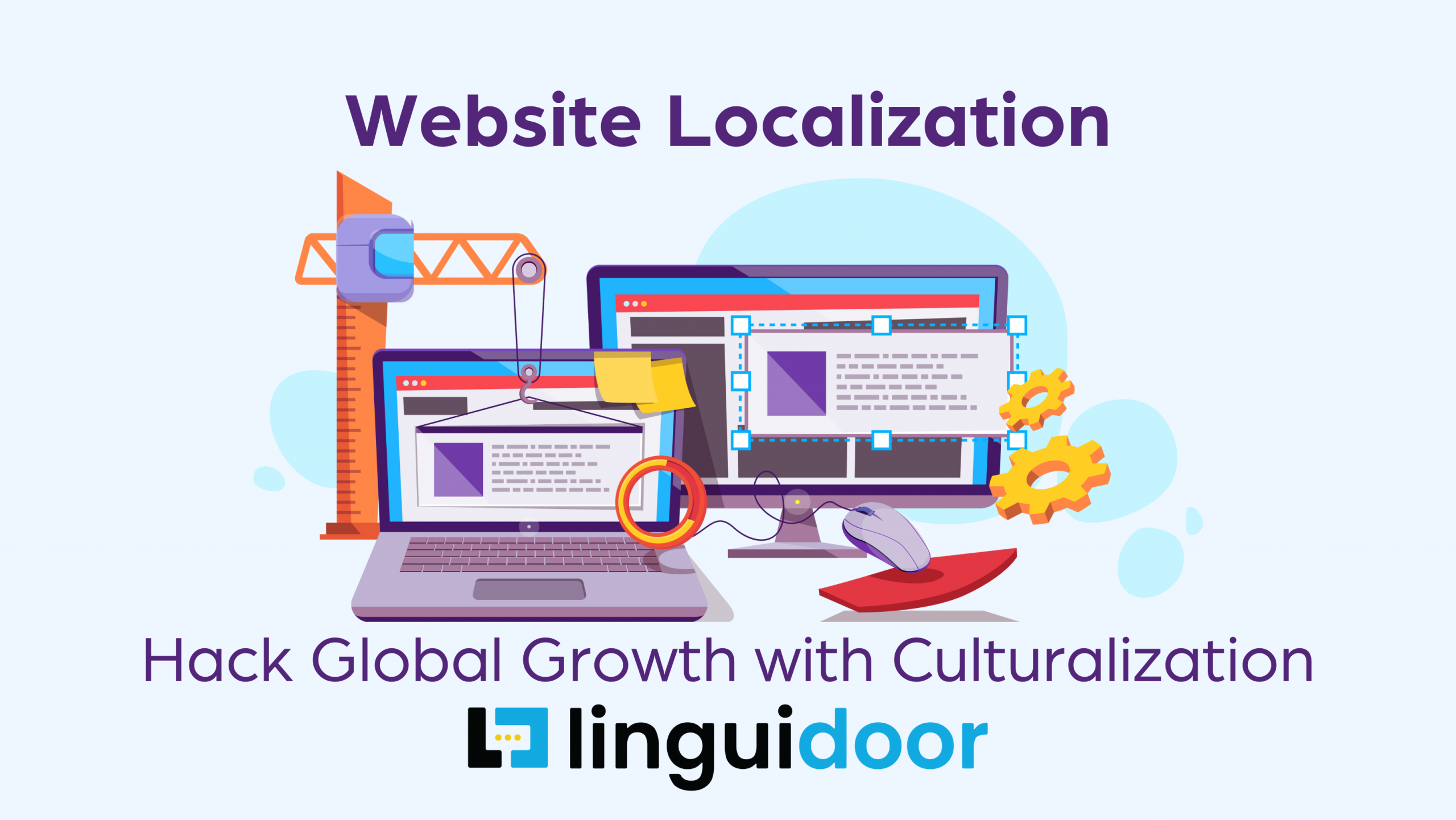Website Localization: Hack Global Growth with Culturalization

Website Localization: Unlocking Global Opportunities through Cultural Adaptation
In the era of globalization and the widespread adoption of the internet, businesses have come to realize the imperative nature of expanding their digital presence beyond national boundaries. As companies strive to tap into international markets and connect with diverse audiences, website localization emerges as an indispensable strategy. This concept encompasses a comprehensive process of customizing a website’s content, design, and functionality to seamlessly align with the nuanced preferences, language intricacies, cultural dynamics, and regulatory requirements of a specific target market.
Website localization is a multifaceted endeavor that goes beyond mere translation. It involves adapting the website’s visual elements, layout, and user interface to resonate with the local aesthetic sensibilities and user experience expectations. Additionally, content localization entails translating textual material into the target language while accounting for subtle nuances, idiomatic expressions, and cultural references to ensure maximum relevance and engagement.
The significance of website localization lies in its ability to establish a deep connection with users, fostering a sense of familiarity and trust. By addressing linguistic and cultural gaps, the localized website creates a user experience that feels native, intuitive, and personalized. Furthermore, the inclusion of localized customer support, delivery options, and payment methods further enhances convenience and accessibility for the target market, driving higher engagement and conversion rates.
One of the key goals of website localization is to establish credibility and authenticity in the eyes of the local audience. A well-localized website demonstrates a commitment to understanding and respecting the culture and values of the target market. This, in turn, builds trust and enhances the perception of the brand as a reliable and knowledgeable provider of products or services.
From a broader business perspective, website localization contributes to improved global market penetration. By tailoring the website experience to the specific preferences and needs of the target market, businesses can effectively capture the attention of potential customers and gain a competitive edge. By properly implementing website localization strategies, companies can expand their reach, tap into new markets, and maximize their growth potential in the global arena.

Understanding Website Localization
Website localization is more than just translating text from one language to another. It involves a comprehensive adaptation of various elements to ensure that the website resonates with the cultural norms and linguistic nuances of the target audience. These elements include:
Language Translation: This is the most apparent aspect of website localization. It entails translating all textual content on the website, including headings, body text, menus, buttons, and more, into the language of the target market.
Cultural Context: Effective localization goes beyond literal translation. It considers cultural sensitivities, idiomatic expressions, and local preferences to ensure that the message is conveyed appropriately and respectfully.
Visual and Design Elements: Localization also involves adapting visuals, images, graphics, and videos to reflect the cultural preferences of the target audience. Colors, imagery, and layout should resonate with the local culture.
Date and Time Formats: Different regions use varying date and time formats. Adapting these details to match the target audience’s preferences enhances user experience.
Currency and Payment Methods: E-commerce websites need to adjust currency symbols, pricing formats, and payment methods to align with the local market.
Regulations and Legalities: Adhering to local laws, privacy regulations, and industry standards is crucial. This includes terms of service, privacy policies, and any other legal requirements specific to the target region.
Search Engine Optimization (SEO): Localizing keywords, meta tags, and other SEO elements ensures the website ranks higher in local search engine results.
Cost Considerations in Website Localization
The cost of website localization can vary significantly depending on several factors. I spoke to Renny, an expert in website localization, to gain insights into the cost structure. Renny mentioned that pricing considerations usually include:
Scope of Content: The size of the website and the number of pages that need to be localized directly impact the cost. More extensive websites with multiple pages and complex functionalities will generally be more expensive to localize.
Languages: The number of languages into which the website needs to be localized affects the cost. Translating into languages with more complex scripts or fewer translators available may incur higher costs.
Level of Complexity: Websites with intricate designs, animations, and interactive elements may require additional effort to localize while retaining functionality, leading to higher costs.
Cultural Complexity: Some cultures require more nuanced adaptations, which could involve substantial revisions to content and design. This may increase the overall cost.
Project Timeline: Urgent localization projects may require more resources to expedite the process, potentially resulting in higher costs.
Ongoing Maintenance: After the initial localization, ongoing updates and maintenance to keep the website current and relevant in different markets can incur additional costs.

The Localization Process: How it Works
Website localization is a systematic process that involves multiple stages to ensure the seamless adaptation of a website to a specific target market. The process can be broken down into the following steps:
Project Assessment: Understanding the project’s scope, goals, target audience, and required languages. This step lays the foundation for the entire localization process.
Content Extraction: Identifying all the content that needs to be localized, including text, images, videos, buttons, and other elements.
Translation and Adaptation: Translating textual content while considering cultural nuances and idiomatic expressions. Adapting images and visuals to resonate with the target culture.
Website Adjustment: Modifying design elements, layout, colors, and fonts to align with the preferences of the target audience. This step ensures the website maintains its visual appeal while reflecting local aesthetics.
Functionality Testing: Ensuring that all interactive features, forms, buttons, and other functional components of the website work as intended after localization.
Cultural Sensitivity Review: Conducting a comprehensive review to ensure that all elements are culturally appropriate and respectful, avoiding any potential cultural misunderstandings or offenses.
SEO Optimization: Adapting keywords, meta tags, and other SEO elements to improve the website’s visibility in local search engine results.
User Experience Testing: Engaging target audience members to explore the localized website and provide feedback on its usability, clarity, and overall experience.
Final Review and Approval: Conducting a final review to ensure that all localized elements are accurate, functional, and culturally appropriate before the website goes live.
Empowering Clients to Localize Their Websites
For clients seeking to localize their websites, embarking on this journey requires careful planning and strategic execution. Here’s a step-by-step guide to help clients navigate the website localization process:
Market Research: Understand the target market’s preferences, cultural norms, and linguistic nuances. Conduct research to identify the specific adaptations needed to resonate with the audience.
Content Inventory: Take stock of all website content, including text, images, videos, and interactive elements. This inventory will guide the localization process.
Translation Partner: Collaborate with professional translation and localization services that have expertise in the target market’s language and culture. These partners can provide valuable insights and ensure accurate adaptations.
Cultural Consultation: Consult with experts or individuals from the target culture to ensure that the localized content is culturally sensitive and appropriate.
Design and Functionality: Work with designers and developers to adapt the website’s design and functionality to the preferences of the target audience. This may involve adjusting colors, layouts, and interactive features.
Quality Assurance: Thoroughly test the localized website for functionality, visual appeal, and cultural appropriateness. Engage local users to provide feedback on their experience.
SEO Adaptation: Modify keywords, meta tags, and other SEO elements to improve the website’s visibility in local search engine results.
Legal and Regulatory Compliance: Ensure that the localized website adheres to local laws, privacy regulations, and industry standards. This includes updating terms of service, privacy policies, and other legal documents.
Launch and Promotion: Once the localized website is ready, launch it in the target market. Promote the website through appropriate marketing channels to attract local users.

Examples of Successful Website Localization
Lyft:
Lyft, a popular ride-sharing platform, successfully localized its website for different markets around the world1. They tailored the content, language, and user experience to match the local preferences and needs of each target market.
Airbnb:
Airbnb is known for its successful website localization efforts. They carefully adapt their website to cater to the unique cultural and linguistic aspects of each country1. This includes not only translating the content but also tailoring the design, localizing property descriptions, and incorporating local currency and payment options.
Duolingo:
Duolingo, a language learning platform, has achieved great success with website localization. They offer their platform in multiple languages and provide localized content that is specifically tailored to different cultures and regions1.
Slack:
Slack, a communication and collaboration platform, has effectively localized its website for a global audience1. They have localized their user interface, support, and resources to provide a seamless experience for users in different countries.
Square:
Square, a financial services company, has implemented successful website localization strategies to expand its global reach1. They have localized their website content, payment options, and customer support to provide a tailored experience for different markets.
Conclusion
In conclusion, as the world becomes increasingly interconnected, website localization has become a paramount strategy for businesses seeking to expand their digital footprint across borders. With its ability to bridge linguistic and cultural gaps, website localization not only enhances user experience and credibility but also drives higher engagement and fosters improved global market penetration. By considering the unique preferences, language intricacies, cultural nuances, and regulatory requirements of each target market, businesses can nurture meaningful connections with their global audience and unlock new opportunities for growth and success.
Contact us today and take your first step towards global success.

Made up your mind yet?
Empower your globalization goals today!




